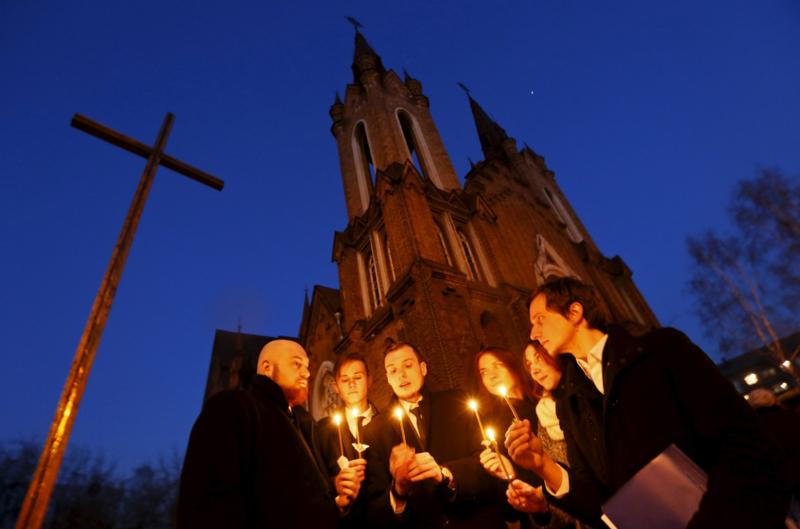Christmas and Easter are the two biggest feasts in the church calendar. Even those who rarely gather for worship tend to show up on those two days.
The two feasts are quite different in character. Christmas might be seen as a rather intimate feast, with the focus on the Holy Family and the birth of a child. The manger scenes tend to evoke tender emotions in us, and “Silent Night” seems like the dominant anthem.
Easter, on the other hand, is a feast with a vast scope. It encompasses all of history and beyond. Many people may think of Easter as simply about the resurrection of Christ from the tomb (which is certainly central!) but the readings assigned to this great feast depict a much broader view.
[hotblock]
The primary celebration of Easter is the Easter Vigil on Holy Saturday night. There the readings begin by recalling the creation of the universe (Gn 1:1-2:2). The subsequent readings then guide us through the history of God’s dealings with humanity, with Abraham and Isaac, Moses and the Exodus, and several readings from the prophets of Israel.
The vigil readings culminate, of course, with the proclamation of the Resurrection, with accounts from Matthew, Mark and Luke assigned to the three different cycles of the Lectionary.
So, in a brief time, we move from the creation of the universe to the new creation that begins with the Resurrection. But this new creation doesn’t stop there.
Even before the proclamation of the Gospel at the vigil, Paul reminds us that resurrection is not an experience only for Jesus: “We were indeed buried with him through baptism into death, so that, just as Christ was raised from the dead by the glory of the Father, we too might live in newness of life.”
In the midst of the vigil we celebrate the baptism, confirmation and first Eucharist of those who have prepared through the catechumenate, revealing in their own lives the power of the Resurrection to bring us to new life.
New life that comes out of death is a basic theme of the Christian life. Through baptism, we share in Christ’s death and resurrection. But we must embrace that mystery throughout our lives, dying to sin and selfishness in order to rise to fuller life in Christ.
On Easter Sunday morning, the reading from Colossians puts it this way, “For you have died, and your life is hidden with Christ in God. When Christ your life appears, then you too will appear with him in glory.” It is a lifelong process that culminates in our final death and resurrection to life that lasts forever.
The final reading for Easter Sunday is an option for afternoon and evening Masses. The story in Luke 24 of the two disciples who experience the presence of Christ “in the breaking of the bread” at Emmaus reminds us that we encounter the risen One and embrace his death and resurrection in every celebration of the Mass.
The Eucharist sustains us on our journey through all our dying and rising in Christ.
***
(Father Mick is a priest of the Archdiocese of Cincinnati and a freelance writer.)
PREVIOUS: We share in Christ’s dying and rising, all year long
NEXT: Comings of the Holy Spirit: First to the disciples, then to all




Share this story